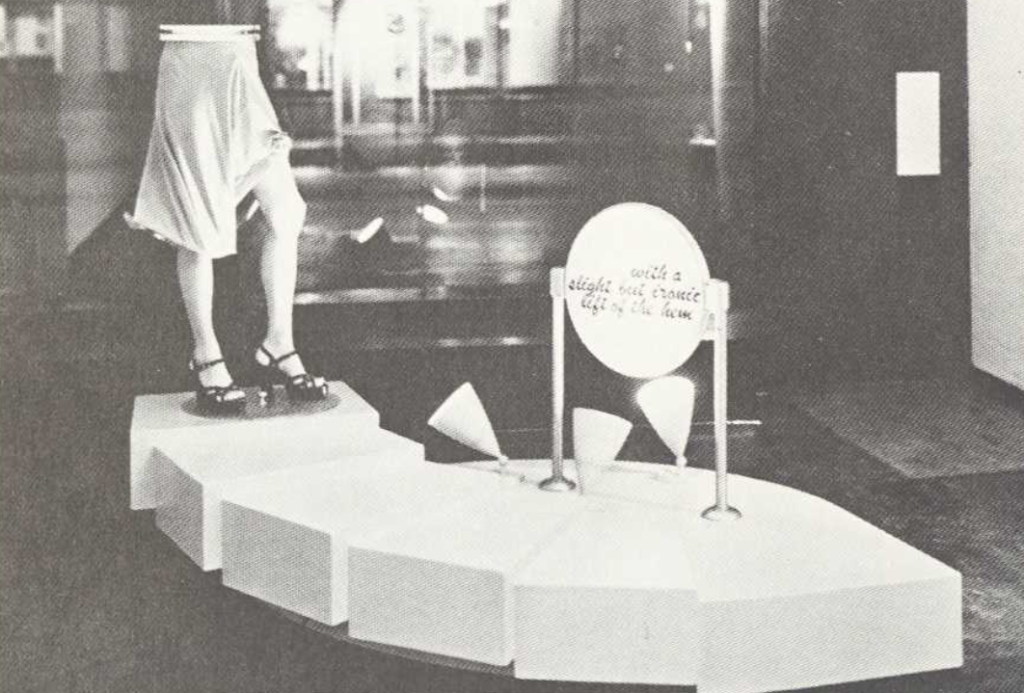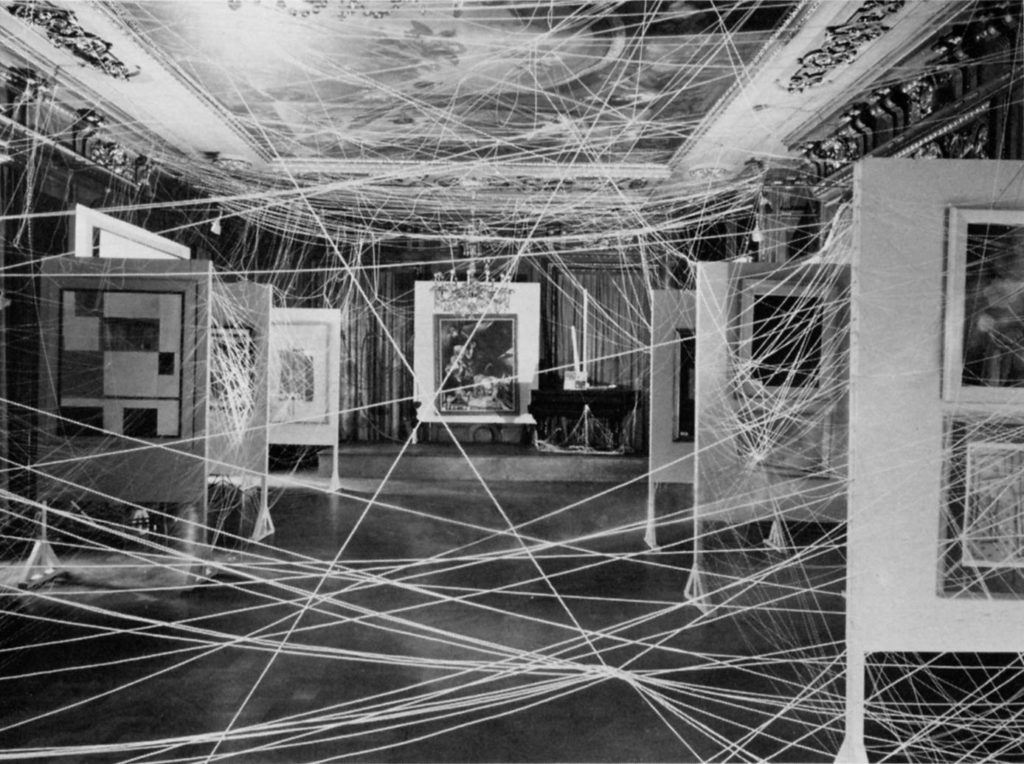Ritual and Camera (1985)

Graham, Robert. (1985). Ritual and Camera. Parachute, 39, pp. 31-32. Retrieved from https://numerique.banq.qc.ca/patrimoine/details/52327/3645269Works of art are received and valued on different planes. Two polar types stand out: with one, the accent is on the cult value; with the other, on the exhibition value of the work.
Walter Benjamin
It is certainly curious that during the same period when Benjamin’s work was emerging from the shadows, gaining influence and providing a strength and vocabulary for new artistic and photographic practices, that there should also be developing a body of work which, while acknowledging Benjamin’s analysis, operated from an entirely opposing basis. For central to the history of installa tion is its implicit critique of exhibition.
What distinguishes installation from exhibition?
Traditional exhibition organizes and displays discrete objects in settings given to be neutral and incidental. The edges of the works establish boundaries between the works and the architectural features of wall and panel distinguish the space of the observers from the region of the observed. Both the art and the viewer are visitors to the space, their paths intersect, and the encounter is marked by the distance of such a perspectivism.
Installation refutes these boundaries and domains and spreads the enclosures to absorb the entire volume of exhibition space. Extending beyond the wall, it colonizes the floor, ceiling and the air itself to make aware the full dimensionality of the art experience. Thus the viewer becomes a participant in and a constituent of the work’s construction. For the primary unit of installation is the room it occupies, and the room, with all its formal and historical features, is the base material installation artists seek to transform.

Marcel Duchamp prefigured this concern in two pieces, Twelve Hundred Coal Bags Suspended from the Ceilling Over a Stove (1938) and Sixteen Miles of String (1942), where, in both cases, invited to contribute to surrealist exhibitions, he took the opportunity to provide impediments to clear vision: for the coal bags had been used and shed their dust, while the string blocked the passages. In both cases, he drew attention away from the isolated objects and directed it toward their environment which, in a metaphoric way, comes to represent the context and conditions under which the works are gathered and displayed. Two more points: both works were temporary and had only brief existence and what remains of them can be found only in reports and photographs.
Over the last two decades, both installation and contemporary photography were empowered by a suspicion of the cult of the marketable art object — specifically, the commodity fetish. Yet, while historically contiguous, and often sharing a common audience, the strategies of the two modes are completely different.
Photography offered works ephemeral, easily reproducible, accessible, cheap and biased toward the efficient transmission of informational content: in short, critical and destructive of the received conditions of artistic production and, in Benjamin’s words, one of the “most serviceable exemplifications” of new exhibitional functions.
Also, in terms of professional functions, both photography and installation contributed to the shift which occurred in the definitions of the artist and ar tistic activity, from the model of the light manufacturer of durable goods to the service model of a task-oriented specialist in the exploration of unique brands of experience and information.
Yet in installations we see operating tactics quite different from those of photography: in the purposeful employment of impoverished and temporary materials, installations establish unique, specific, site-bound experiences which counter the forces of commoditization by their immoveable, irreproducible and inexchangeable nature, and yet, as such, also harken back to the auratic, ritual, local and cultic characteristics of pre-exhibitionist art. From the unconvivial minimalists (aggressive toward their surround) to earthworks which seek to transform nature herself, installation pieces leverage the power of their place and counter the peripatetic media by their own intractability.
Now this might go some ways to explain how unsatisfactory so much photo installation work can be. For photo-installation is a mongrel form, which seeks to invoke two conflicting sets of considerations. Rather than a compounding of attributes, photo-installation provides a hedging strategy which takes the positive features of each and, more often than not, simply serves to cancel them out. On occasion, photo-installations have provided sophisticated examples of provocative displays for propagandistic or educative purposes, and should be of some interest to designers in the persuasive arts.
Having said this, I will yield to some exceptions. Size, of itself, is usually given slight portion in the determination of meaning, yet there are photo-installations of sufficient scale which would satisfy the above criteria for installation. Such large works establish relationships between bodies — the bodies viewing the work and the appearance of those viewing bodies. In this instance, there is a clear invocation of the ceremonial and processional aspects of the social experience of art, and in a manner exclusive to installation.
The oxymoronic “cultic photograph” exists, not on the level of its own com moditization, but in the realm of the kind of “image fetishism” found in publici ty. There is an almost measurable sense of frustration in contemporary art, in the feebleness felt against the power of the domineering media. How many exhibitions and installations of the last twenty years have been dedicated to providing critiques of prevalent imagery? Against mass fascination and allure, there appear to be two choices – the technological route of pure photography battles the media on their own ground and identifies the struggle as being over the technological means themselves. On the other hand, installations, in their immodest claims, counter the totalizing effect of cumulative media by offering an equally totalizing experience which addresses precisely those aspects of life unavailable to media treatment. That these same concerns are so often regressive ones of magic, geomancy, and mysticism of one sort or another, merely points out how, in the face of our present culture, unacknowledged alliances between progressives and neo-ritualists can sometimes occur.
With installations of photographic projection, we have a special case. Here the artist fills and defines the volume of the space with illumination, casts images on the surfaces, and encloses figures in the light and dark. The interiority of the installation resembles those ancient drawings of a basic camera, the skull with its viewing apertures, the eyes. As a model for consciousness it is crude but suggestive: when we enter installations, we become a part of the work we were seeking. All the best kinds of knowledge have that character of mutual absorption.
L’installation occupe une zone intermédiaire entre la «valeur cultuelle» et la «valeur d’exposition» telles que définies par Benjamin. L’installation, niant le «perspectivisme» de l’exposition et le fétichisme de l’objet d’art, invoque à nouveau l’espace cérémonial de l’art. L’installation photographique est une forme hybride qui, au risque de contradictions internes, tente à la fois de trai ter des effets mass-médiatiques et d’utiliser l’impact créé par la spécificité d’un lieu.
Robert Graham is an art critic living in Montreal.